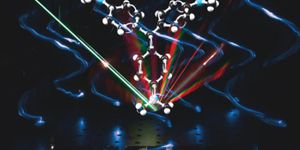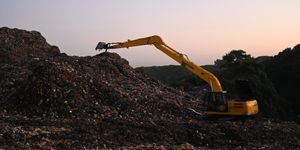Future Moon and Mars Astronauts Will Need Long-Term Heat and Air Conditioning in Reduced Gravity and Extreme Temperatures
An experiment from Purdue University scheduled to be launched on Northrop Grumman’s 19th commercial resupply services mission (NG-19) to the International Space Station (ISS) on August 1 will evaluate new heating and cooling technologies that can withstand the harsh conditions of outer space, specifically pertaining to reduced gravity and extreme temperatures. This will be the second experiment being conducted as part of the Flow Boiling and Condensation Experiment (FBCE), which has been onboard the ISS since August 2021, and holds the potential to help establish a long-term human presence on both the Moon, and eventually Mars.
Engineers recently loading experiments into the NG-19 capsule prior to its August 1 launch, including the second experiment for the Flow Boiling and Condensation Experiment (FBCE) from Purdue University. (Credit: NASA/Danielle Johnson)
“We have developed over a hundred years’ worth of understanding of how heat and cooling systems work in Earth’s gravity, but we haven’t known how they work in weightlessness,” said Dr. Issam Mudawar, who is a Betty Ruth and Milton B. Hollander Family Professor of Mechanical Engineering at Purdue University.
While the first experiment conducted by the FBCE analyzed how reduced gravity affects boiling, which was completed in July 2022, this second experiment will analyze how reduced gravity affects condensation. Both module experiments are slated to stay on the ISS through 2025, which will allow the entire fluid physics science community to use and learn from this data during that time.
Video discussing the arrival of the Flow Boiling and Condensation Experiment (FBCE) to the ISS in August 2021
“We are ready to literally close the book on the whole science of flow and boiling in reduced gravity,” said Dr. Mudawar.
This works comes after 11 years of collaborating with engineers at NASA’s Glenn Research Center to design and develop the FBCE hardware so it could fit on the Fluids Integrated Rack onboard the ISS.
In addition to helping future astronauts on the Moon and Mars, this technology could also be used to design better spacecraft for long-term, deep space missions, specifically with nuclear or electric propulsion systems since they will require more innovative designs given their long distances from Earth.
In terms of fluid physics research, FBCE is one of NASA’s biggest and most complicated experiments, and Dr. Mudawar’s team is currently about to publish a plethora of studies discussing all the data that FBCE has collected during its time onboard the ISS. This will add to the more than dozens of papers the team has already published regarding fluid flow in reduced gravity since the start of the project.
“The papers we have published over the duration of this project are really almost like a textbook for how to use boiling and condensation in space,” said Dr. Mudawar.
In the end, the goal is to design the most efficient equipment capable of operating in the one-sixth gravity of the Moon and the one-third gravity of Mars.
What new discoveries will researchers make about heating and cooling in reduced gravity in the coming years and decades? Only time will tell, and this is why we science!
As always, keep doing science & keep looking up!
Sources: EurekAlert!, Northrop Grumman, NASA, Purdue University News, Purdue University News (1), Purdue University News (2), NASA (1), Purdue University









